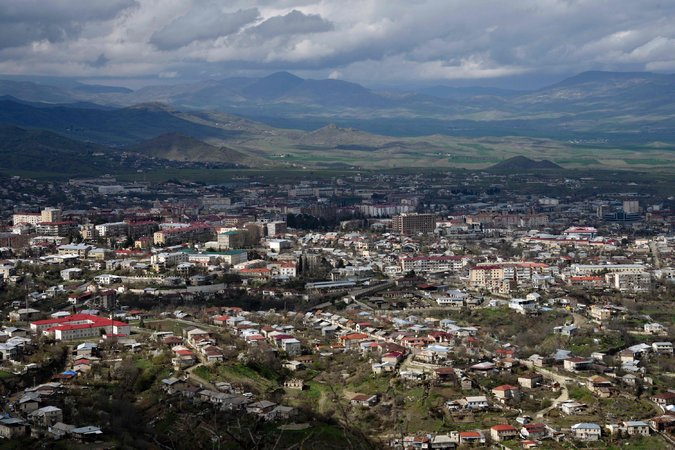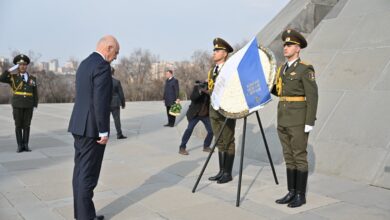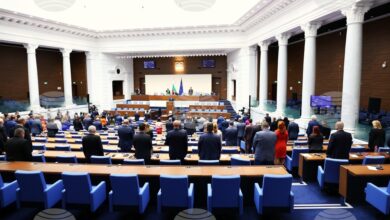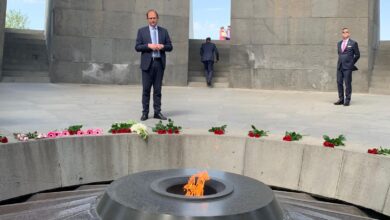
Andrew E. Kramer
The New York Times
On a crystalline spring morning, Iosif Adamyan sipped coffee on the veranda of his guesthouse, overlooking a pear orchard in bloom and, in the distance, a range of snowy mountains.
In this picturesque spot, he entertains guests from England, France and Russia; in fact, people from “the whole world,” wind up here, he said, with the peculiarity that many of them speak Armenian.
At the stately Hotel Armenia, which caters to the diaspora visiting the capital of the disputed mountain enclave of Nagorno-Karabakh, dear to the hearts of Armenians everywhere, the dining room clings to the traditional starched tablecloths and, of course, aged Armenian cognac.
“Karabakh is the cradle of Armenia,” said Lyudmila A. Oganyesyan, the director of School No. 3, beautifully restored in a facade of tan, locally quarried stone and paid for, naturally, by a wealthy Armenian benefactor, in this case an insurance executive from Moscow.
For being the capital of a war-afflicted former Soviet splinter region, a category of places better known for mud and misery, Stepanakert, with a population of 50,000 or so, is surprisingly livable.
Throughout the city, which went onto a war footing this month during three days of fighting with Azerbaijan’s military, signs of the careful attention and largess of a wealthy diaspora are everywhere: a new hospital rising on a hillside; smooth new asphalt on the road into town.
This support from the broader world of Armenian émigrés, not least from the large community in Southern California, adds an improbable metropolitan flair to the tiny republic of Karabakh and its capital.
The city still has some rough edges, beginning with the six-hour drive to get there on endless switchbacks that take you past a parade of burned and abandoned villages of the Armenians’ enemies, the Azerbaijanis, and terrifying thousand-foot cliffs. In its mountain perch, the region is surrounded, marooned in Azerbaijan, with this road the only supply route. No airport functions.
The sustenance from the diaspora makes all the difference. Funds flowed in from the late Kirk Kerkorian, the California financier. A Swiss-Armenian built a sturgeon farm called the Golden Fish. California and six other American states have recognized the splinter republic, though the federal government and in fact no other country have.
During the fighting, Stepanakert’s main square — immaculately paved, with stunning views of an alpine valley — became a hub of excitement for young and old alike.
Jeeps wheeled about, screeched to a stop for soldiers to hop in. An old veteran from the 1991-94 war stood nearby to see them off, the empty right sleeve of his jacket carefully ironed and tucked into a pocket.
David Agamalyan, 14, stood with two friends gaping at the armed men and bustle. In this city, any boy on the street has two numbers on the tip of his tongue, his age and his best time for disassembling and reassembling a Kalashnikov rifle, a skill that is taught in schools from age 13.
David’s best time is 27 seconds, certainly a feat considering all the springs and rods and sheet metal parts involved. Girls are taught first aid. Both boys and girls are taught to march and stand at attention.
At School No. 3, children’s drawings adorning the walls show in crayon and colored pencil the smoldering fight that is all they have ever known: a tank in a mountain landscape; men marching with rifles.
All boys join the army. Asked whom he would fight in four years when he signs up, David shrugged at the ridiculous question. “Our neighbor, of course,” he said.
Photo: Getty Images








